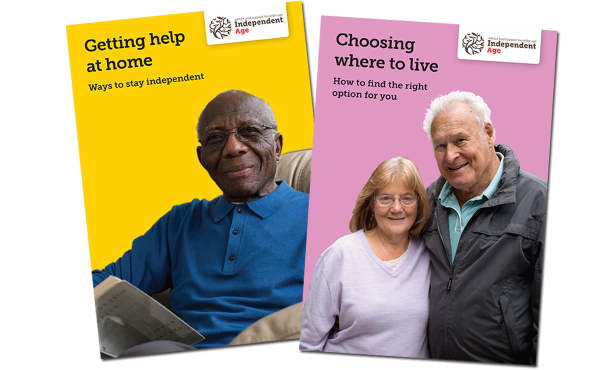
Our two new guides, Choosing where to live: How to find the right option for you and Getting help at home: Ways to stay independent, are designed to help older people consider the different options available to them, whether they want to find out about adaptations and other services to help them stay independent in their own home, or examine the pros and cons of a range of housing options to make the choice that’s best for them.
Choosing where to live provides information and advice on topics such as deciding whether your home is right for you, thinking about your priorities, and the different housing options to consider. Getting help at home covers getting help with household chores, managing day-to-day tasks and activities, adapting your current home, short-term help after hospital, and personal care.
Choosing where to live and Getting help at home are completely free to download or can be ordered for free by calling 0800 319 6789.
Here are some top tips from each guide.
What to think about if you decide to move
Think about what you’ll need now and in the future – Moving can be a big upheaval, so considering your future needs now will give you more choice and control. Think about where you want to live, your health and care needs, and your budget. Health and care needs, in particular, might change, so it’s important to take this into consideration.
Choose the type of home – There is a range of different types of housing that you could move to, so think about the pros and cons of each before you decide what would be best for you. Options include downsizing, moving in with family, sheltered or extra care housing and care homes.
Plan ahead for the move – Plan as much as possible in advance to help reduce the stress and cost and make things go as smoothly as possible. Get quotes from a few different removal companies and be realistic about what possessions you can take with you if you’re moving to a smaller property. Download our checklist to get you started.
How to make changes to stay independent at home
Think about home adaptations – There may be equipment and adaptations you can get to help you stay in your home for longer, like installing a stairlift, grab rails or a wet room. Get in touch with your local council to arrange a care needs assessment involving an occupational therapist to find out what you need and if you could be eligible for financial help.
Use simple technology – There are a range of gadgets available which could help make life easier and keep you safe at home. Telecare services involve alarms and sensors which can trigger a call for help when activated. They include wearable alarms, movement sensors that can detect a fall, and fire alarms that automatically call for help.
Look into personal care at home – Carers can visit you to help with things like washing and dressing yourself, getting in and out of bed and preparing and eating food. The council may be able to help you with this or you could employ someone yourself, either directly or through an agency. Get in touch with your local council to arrange a care needs assessment to find out what you need and what support may be available.

